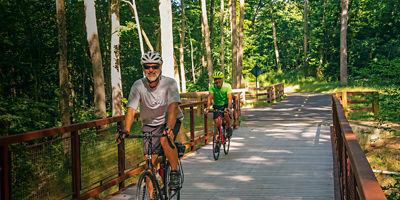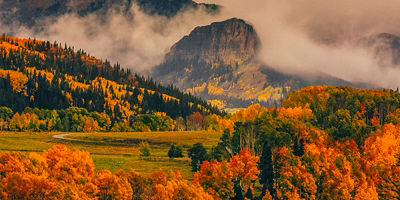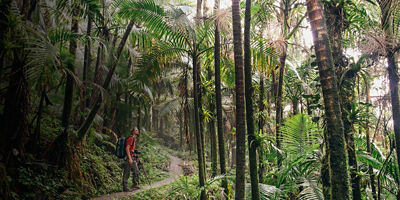
Arizona’s Grand Canyon is one of the Seven Natural Wonders of the World—and it’s not hard to see why. The marvels of the canyon—its massive scale, rich colors, magnificent rock layers, raging crystalline waters, and pockets of lush greenery—can’t be found anywhere else. Today, millions of people visit every year.
Of course, human activity in the canyon has existed for centuries. Indigenous peoples made their homes in and near the canyon long before colonial explorers “discovered” it—and some still live there. In 1869, John Wesley Powell made the pivotal first trip through the canyon by boat, and concluded, “You cannot see the Grand Canyon in one view, as if it were a changeless spectacle from which a curtain might be lifted, but to see it you have to toil from month to month through its labyrinths.”
Most people don’t have months to follow Powell’s advice, but you can see the Grand Canyon—really see it—with a smart plan and just enough toiling. Here, we’ve distilled this vast wilderness into the essentials you need to know for a perfect visit.
How the Grand Canyon was Formed
The walls of the Grand Canyon are a staggering one-mile high, exposing layers of at least 40 rock types—some dating back two billion years. These individual layers of varying shades of reds, browns, whites and oranges, from the Tapeats Sandstone to the Redwall Limestone and the Coconino Sandstone, each tell distinct stories of the past. Somewhere between 70 and 30 million years ago, plate tectonics pushed the whole region upward, creating the flat Colorado Plateau. The canyon itself is relatively young, as it was only about six million years ago that the mighty Colorado River began carving away at the rock. These geologic forces have created the Grand Canyon we know today: a mile deep, 277 miles long, and 18 miles wide.
The Grand Canyon’s Human History
Indigenous people lived in and roamed what’s now the Grand Canyon for millennia, hunting, farming, and establishing homes. The Ancestral Puebloans lived in the area around 200 BC and stayed for centuries, building dwellings along the canyon rims. Today, 11 federally-recognized tribes with ties to the canyon are the Navajo (Diné), Hopi, Zuni, Hualapai, Havasupai, Kaibab Band of Paiute Indians, Las Vegas Band of Paiute Indians, Moapa Band of Paiute Indians, Paiute Indian Tribe of Utah, San Juan Southern Paiute Indians, and the Yavapai-Apache Nation.
The Havasupai Tribe still lives inside the canyon, on a reservation of one million acres on the west side. (It was created in 1882, and took away some 90% of the tribe’s original land). The reservation’s turquoise pools and thundering Havasu Falls are managed by the tribe and visitors make reservations through them, not the National Park Service. The tribe also manages the Skywalk, the glass-floored sidewalk that juts 70 feet from the rim for a stomach-dropping view. Cool fact: The first Native female guide on the river was Havasupai (Shana Watahomigie), who started guiding in 2001.
Visiting the National Park
President Theodore Roosevelt initially protected the Grand Canyon 1906. The national park we know today, established in 1919, is one of the most-visited national parks in the country. In 2019 nearly six million people visited the park. It’s crowded, yes, but only in certain places, and it’s possible to find solitude any time of year. If you want to go to the most popular spots (like the South Kaibab Trail), start around sunrise or visit at less-crowded times of the year (like late fall or early spring).
When visiting the canyon the big choice you have to make is which rim to target (they’re separated by a 4.5-hour-long car ride). The South Rim (3.5 hours from Phoenix) is more developed and much busier, while at the North Rim (4.5 hours from Las Vegas) you’ll find a quieter experience with less amenities. The South Rim is accessible all year, but the North Rim is closed during the winter.
Seasons
Winter
The Grand Canyon is in the high desert: the South Rim is situated at 7,000 feet and the North Rim is at about 8,300 feet. In the winter, it’s cold and snowy on the rims. Visitors can expect freezing temperatures and snowy trails that require traction devices to navigate safely. The advantages of winter are the lack of people and the spectacular views of the reddish canyon walls dusted with snow. But remember, the canyon is so deep that winter is different at the bottom, with much milder temperatures and no snow. A winter backpacking trip here can start in snow and ice at the rim and in one day reach shorts-and-T-shirt weather at the bottom. The North Rim is closed during winter.
Spring
In the spring the snow melts, temperatures start to warm, flowers and plants start coming back to life, and the animals that migrate south for the winter start to return. There’s a good chance to spot elk, mule deer, and perhaps even bighorn sheep. Seasonal creeks flow, making spring the best time for backcountry journeys in areas where water is scarce. The crowds start to ramp up again in the springtime.
Summer
As with most national parks, summer is the peak season so it can be crowded, especially at the popular South Rim. It’s also the hottest time of year, and temperatures often reach over 100 degrees at the bottom. Extra water, sunscreen, and sun protection are mandatory. It’s also monsoon season, which means powerful thunderstorms. To beat the crowds and heat, and any storms in the forecast, get an early start.
Fall
As the heat fades, so do the crowds. Fall is a great time for hiking in the canyon, both for the more moderate temperatures and for the changing colors. Look out for the aspens and cottonwoods to turn shades of yellow and orange.























